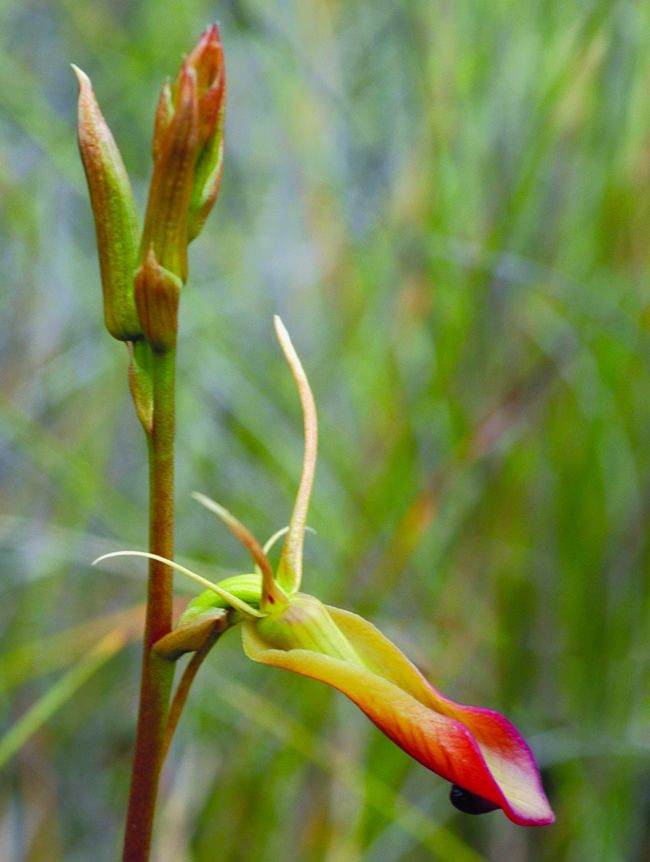The extremely hot weather on New Year’s Eve, when the temperature topped 40°C, was certainly not good news for our summer orchids, although some have not been adversely affected.
Rosy Hyacinth Orchids Dipodium roseum, which had given promise of a great flowering season, were just not able to cope with these conditions, and many of the flowers were damaged. Some of the specimes that were still in bud have recovered, and a few of these very attractive, pink orchids can be seen throughout the district. The White Hyacinth Orchid Dipodium pardalinum only produced a few flowering stalks this season – a few weak specimens were noticed at Aireys Inlet, but only one in the usual area at Anglesea. This area was burnt in spring 2010, so it was most likely just the wrong time for these orchids.

Large Tongue Orchid
Another casualty has been the Large Tongue Orchid Cryptostylis subulata. After the good rains, we were hopeful to find the orchid flowering well, and this was indeed the case, as we counted over fifty flowers in the wet grasslands where it grows, near Red River. Unfortunately, only about twelve flowering stems were in good condition – the remainder obviously knocked about by the high temperature. One very fine specimen flowered at Moggs Creek only to be eaten, most likely by one of the local wallabies. This orchid is easy to recognise, growing to about 60 cm tall, with leathery, green, lanceolate leaves and a long, recurved labellum, reddish at the tip, merging to yellow at the base.

Horned Orchid
The news for the Horned Orchids Orthoceras strictum is better. They obviously must be stronger orchids, as they did not appear to be affected by the weather in any way. They have flowered well in their usual site on Mt Ingoldsby Rd near the intersection of Gilbert St, and some beautiful specimens are still flowering near Shiney Eye Track off Forest Rd. This is a distinctive orchid, growing to about 60 cm tall, and bearing brownish green to yellowish green flowers that have long erect lateral sepals which resembel horns. There is a hooded dorsal sepal and a yellow patch on the labellum.
The rare Elbow Orchid Thynninorchis huntianus flowered in December off Tanners Rd, but none were seen in the Harvey St gravel pits, where they used to flower so well. This species is so small and difficult to see that it could easily have flowered unobserved in other areas.
Lard Duck Orchids Caleana major and Small Duck Orchids Paracaleana minor can still be seen flowering in a few places.
All of the above orchids are photographed and described in Orchids of the Anglesea District available from Angair.
Please let us know of your orchid discoveries – we are endeavouring to document the larger picture.
Margaret MacDonald